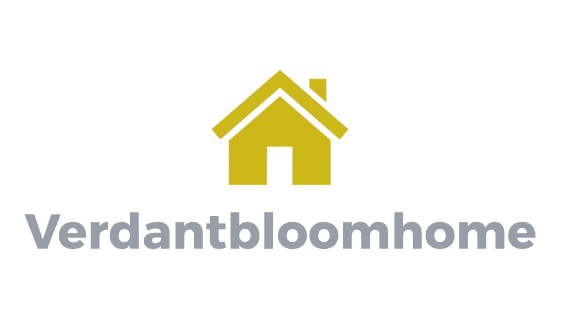Running a farmer’s market stand today means more than just bringing great produce — it means running a small business in real time. From mobile payments to signage to social updates, digital tools can dramatically improve your day-to-day flow and grow your sales. And the good news? Many of the best options are free or built for small vendors like you.
Whether you’re new to the market or a seasoned regular looking to streamline, these seven tools and strategies can help take your farm stand from analog to optimized.
1. Mobile Point-of-Sale That Works Anywhere
You can’t afford to lose a sale because you don’t take cards — and customers expect digital payment options. Tools like Square or SumUp are built for vendors and offer affordable card readers with no monthly fees.
Square’s free POS app helps track inventory and even email receipts. SumUp, popular in both the U.S. and Europe, offers ultra-simple checkout with flat-rate pricing. Both options work with mobile phones or tablets and operate even when internet is spotty — a must for markets without reliable Wi-Fi.
2. Real-Time Inventory with Farm-Focused Apps
Keeping track of what’s selling fast helps you adjust prices or bundle deals on the fly. Farmigo and Local Line are two tools that help farmers manage both online and in-person inventory.
Farmigo is designed for CSA programs but also works for vendors with regular market stops. Local Line lets you track orders, inventory, and customer preferences — all while syncing with your online store if you have one.
By reviewing last week’s trends, you can stock smarter, reduce waste, and focus on high-movers.
3. QR Code Menus and Signs That Don’t Get Soggy
Paper signs fade, fall, or get soaked. Enter the QR code: a clean, digital way to showcase your menu, story, or even a product info sheet. Use Beaconstac or QR Code Generator Pro to create reusable codes linked to a landing page or PDF.
One creative twist? Link the QR code to a short “Meet the Farmer” video or growing method guide. People love knowing who’s behind their food.
Laminated signage with a QR code also looks more modern and trustworthy — and reduces the need to reprint every week.
4. Weather Alerts + Crowd Predictions in One App
For outdoor vendors, the weather isn’t small talk — it’s a strategy driver. Apps like Windy, AccuWeather, and When2Harvest (designed for agricultural use) can help plan not just what to bring, but how much.
Want to get more specific? Try PredictHQ, which aggregates local event data. If a festival or road closure is near your market, you’ll know in advance and can adjust staffing or setup accordingly.
More accurate forecasting = better turnout prep.
5. Social Scheduling That Actually Gets You Customers
Markets thrive on local buzz. But posting on the fly doesn’t always work — especially during peak morning sales.
Use tools like Buffer or Later to pre-schedule photos, promos, or recipe shoutouts. Many customers check social feeds in the morning before deciding which market to visit. A simple “Fresh strawberries and local honey today!” post can make you the destination.
Both Buffer and Later allow tagging locations and using popular market hashtags — key for visibility.
6. Digital Loyalty Punch Cards for Return Buyers
It’s harder to hand out punch cards than to get people to scan their phone. Use Stamp Me or Loopy Loyalty to create mobile-based punch cards. These let regular customers earn free items or discounts without adding paper clutter to your stand.
Even better: You’ll gather email addresses or phone numbers you can use for weekly updates. Just remember to keep it simple — “Buy 5 bunches, get 1 free” is plenty.
Loyalty apps help turn one-time shoppers into return buyers — and that’s what makes your stand sustainable.
FAQ: Smart Card Design for Farmer’s Market Vendors
Alongside digital tools, your printed materials — especially cards — say a lot about your stand. Whether it’s business cards, product info cards, or recipe suggestion cards, they need to be clear, memorable, and easy to carry. Here are answers to common card design questions from market vendors:
Q1: What size works best for market-friendly business cards or product cards?
Stick to standard business card sizes (3.5 x 2 inches) so they fit into wallets and pockets easily. You can also try square cards for a modern look, but avoid anything oversized — customers are usually juggling bags, produce, and kids. Compact = practical.
Q2: How can I create cards that match my farm’s brand without hiring a designer?
You can use the print free cards feature from Adobe Express. It lets you choose from a variety of templates you can customize with your farm logo, colors, and contact details — then download or print professionally. It’s fast and free to start.
Q3: What should I include on a card if I sell seasonal products?
Leave room for flexible or rotating info. Some vendors include a blank section for handwritten product updates or weekly specials. Others use QR codes that link to a seasonal produce list online. Include contact info, farm story, and hours for recurring markets.
Q4: Are glossy or matte finishes better for market materials?
Matte finishes are usually better for outdoor markets. They don’t reflect harsh sunlight and are easier to write on. If you use waterproof pens to jot notes or pricing, matte stock will hold up better. Glossy cards can get slippery in humid or rainy conditions.
Q5: Are there other tools like Adobe Express that are farmer-friendly?
Yes, tools like VistaPrint and Moo offer easy drag-and-drop templates and bulk print options. Moo even lets you create packs of cards with different images — helpful if you want one card per product or season. Just make sure any service you use supports small-batch orders if you’re testing designs.
Great tech doesn’t replace the human connection at a market — it supports it. With a few well-chosen tools and smart design, your farm stand can feel both personal and professional. 🌿
Let your tools do the grunt work. You just bring the greens.

